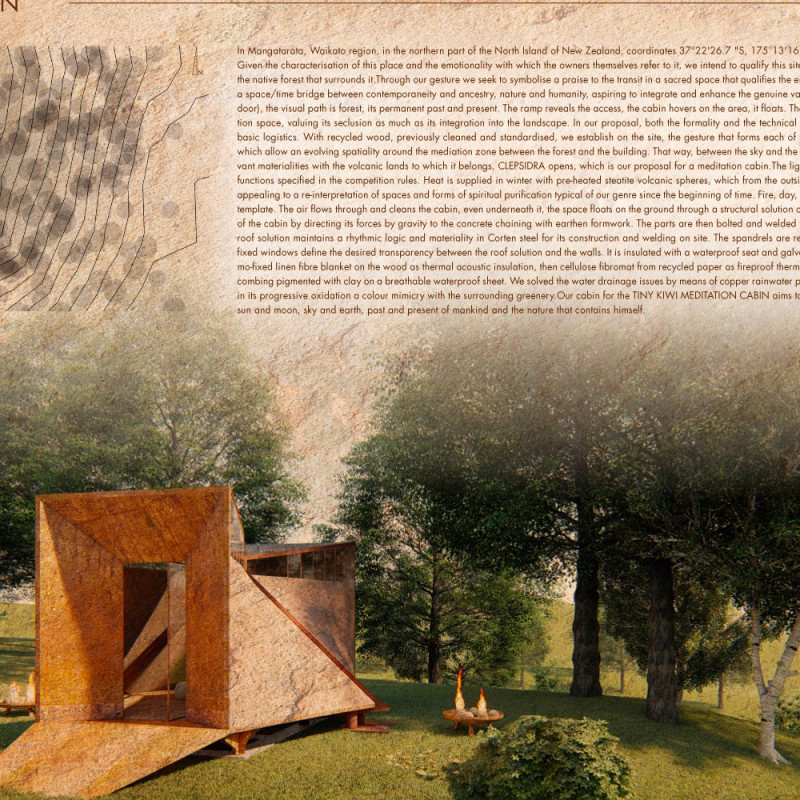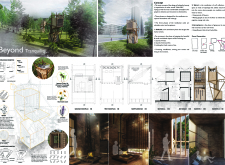5 key facts about this project
Beyond Tranquility is an exploration of meditation and self-reflection set in a peaceful environment designed to support mental well-being. The structure is organized into three phases: Solitude, Satori, and Acceptance. Each phase creates a different experience that allows users to engage with their surroundings and promote relaxation. The design is influenced by the Wabi-Sabi philosophy, which values beauty in imperfection and simplicity.
Phases of Experience
In the first phase, Solitude, users encounter a sensory awakening. This area highlights sound and aroma through a traditional tea ceremony. Visitors are encouraged to immerse themselves in the delicate interactions of nature. By focusing on the sights and sounds around them, individuals can practice mindfulness and connect deeply with their experience in the moment.
Connection to Nature
The second phase, Satori, brings in natural light through carefully placed openings. This design helps create a strong link between the inside and outside, allowing visitors to feel connected to the surrounding environment. The presence of fragrant flowers enhances the space, inviting users to sit down and enjoy a calming atmosphere that encourages inner reflection.
Transition and Transformation
Acceptance, the final phase, signifies a return to the outside world. This area includes plants that attract butterflies, representing themes of freedom and beauty. The design thoughtfully prepares users for their return to daily life. When they leave, they take with them a sense of peace and tranquility gained from their experience.
Sound Design
A key feature of the project is the sound design, which uses adjustable louvers to create a personalized auditory environment. These louvers allow users to change how sound enters the space. Vertical openings absorb sound, inclined surfaces reflect it, and lateral openings diffuse it. This flexibility enriches the user experience, aligning each phase with the goals of meditation.
In the garden space, gentle water features and the soft rustle of leaves create a serene backdrop. These elements enhance the overall atmosphere, bridging the gap between the built environment and nature.



















































